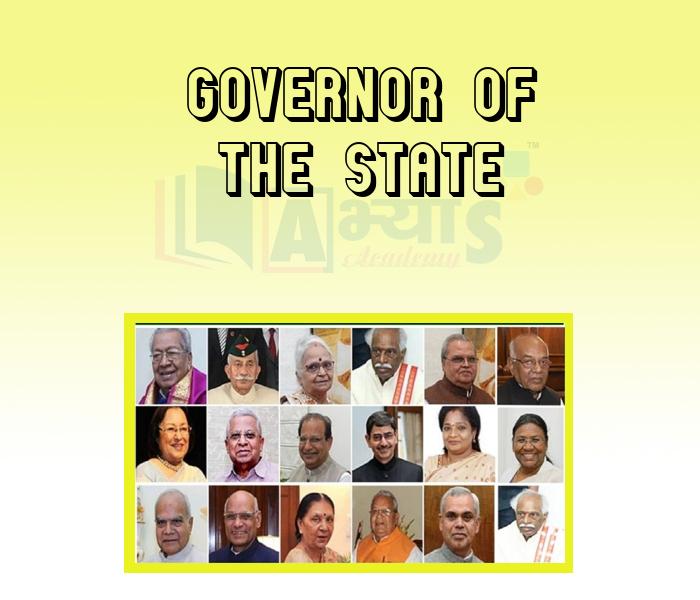Governor of the State










Governor of the State
GovernorThe Appointment
(i) The resident of the concerned State should not be appointed as Governor in the same State.
(ii) The Chief Minister of the concerned State should be consulted before the appointment of the Governor
Which of the following are correct : (a) Article 153 states that there shall be a Governor for each state. (b) Article 154 states that the Governor of a State shall be appointed by the President by warrant under his hand and seal. (c) Article 156 states that the Governor is appointed by the President for a term of 5 years. | |||
| Right Option : C | |||
| View Explanation | |||
Which of the following article states that 'There shall be a Governor for each State' ? | |||
| Right Option : C | |||
| View Explanation | |||
Which of the following are correct : (a) The State Executive consists of the Governor, Chief Minister, Council of Ministers. (b) After the 6th Constitution Amendment 1956, a person can be appointed as the Governor of two or more states. | |||
| Right Option : A | |||
| View Explanation | |||
Students / Parents Reviews [10]
My experience was very good with Abhyas academy. I am studying here from 6th class and I am satisfied by its results in my life. I improved a lot here ahead of school syllabus.

Ayan Ghosh
8thOne of the best institutes to develope a child interest in studies.Provides SST and English knowledge also unlike other institutes. Teachers are co operative and friendly online tests andPPT develope practical knowledge also.

Aman Kumar Shrivastava
10thMy experience with Abhyas academy is very good. I did not think that my every subject coming here will be so strong. The main thing is that the online tests had made me learn here more things.

Hiya Gupta
8thMy experience with Abhyas is very good. I have learnt many things here like vedic maths and reasoning also. Teachers here first take our doubts and then there are assignments to verify our weak points.

Shivam Rana
7thIt was a good experience with Abhyas Academy. I even faced problems in starting but slowly and steadily overcomed. Especially reasoning classes helped me a lot.

Cheshta
10thBeing a parent, I saw my daughter improvement in her studies by seeing a good result in all day to day compititive exam TMO, NSO, IEO etc and as well as studies. I have got a fruitful result from my daughter.

Prisha Gupta
8thAbhyas Methodology is very good. It is based on according to student and each child manages accordingly to its properly. Methodology has improved the abilities of students to shine them in future.

Manish Kumar
10thAbhyas is a complete education Institute. Here extreme care is taken by teacher with the help of regular exam. Extra classes also conducted by the institute, if the student is weak.

Om Umang
10thI have spent a wonderful time in Abhyas academy. It has made my reasoning more apt, English more stronger and Maths an interesting subject for me. It has given me a habbit of self studying

Yatharthi Sharma
10thIt has a great methodology. Students here can get analysis to their test quickly.We can learn easily through PPTs and the testing methods are good. We know that where we have to practice
